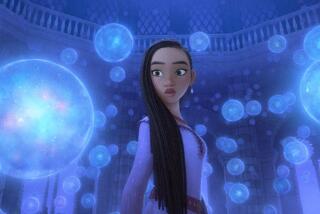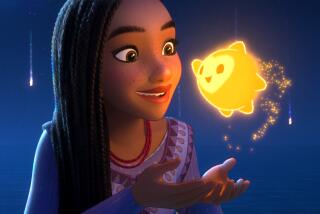The blink-and-you-miss-them film references in ‘Puss in Boots: The Last Wish’
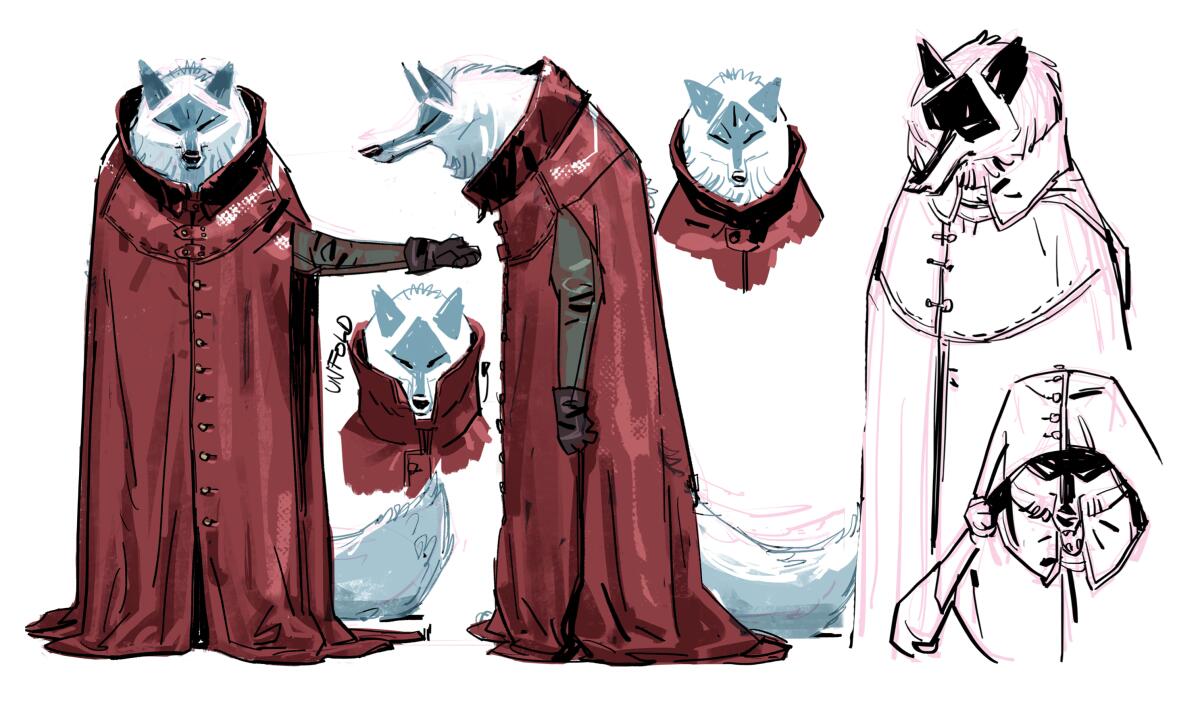
- Share via
The DNA of “Puss in Boots: The Last Wish” is less 16th century Italian fairy tale than it is 20th century Sergio Leone and Akira Kurosawa. Several shots in the animated sequel are directly inspired by some of those masters’ most famous images. It’s all part of how the “Puss” filmmakers used cinematic foreshadowing to convey that “characters chasing the future are oblivious to what’s right in front of them,” director Joel Crawford says.
“When I saw a Sergio Leone spaghetti western for the first time, it was the closest thing to a superhero movie for me,” he says. “Everything’s so dramatic and cool; it made it so fun.”
That manifested in some obvious visual references, such as extreme close-ups of eyes during the final duel — a classic in many of the Clint Eastwood westerns with Leone — and less-obvious ones, as when the filmmakers employed sets and framing to ape Leone’s in moments such as the Bear Family framed in a doorway as they crash into the house where Puss has been holed up — much as Leone framed a scene in 1968’s “Once Upon a Time in the West.”
“John Ford did this a lot, but Sergio Leone’s execution of a frame within a frame — using props or shadows or doorways to frame characters — it feels like a comic-book panel. All of a sudden, they become highlighted. It feels dramatic,” Crawford says.
The film opens with a bright musical number as superhero Puss (voiced, as always, by Antonio Banderas) takes down a giant adversary — and dies, crushed by a massive falling bell. He seems fine in a subsequent doctor visit, though the doctor informs him he has now lost eight lives and has only one left, something that never occurred to the overconfident feline who always assumed he was immortal. He goes to a dimly lit bar and meets the mysterious Wolf (Wagner Moura).
“We wanted to introduce a new tone to surprise the audience. Now we’re in this rugged spaghetti-western feel. We wanted to introduce the Wolf as a bounty hunter, much like Clint Eastwood with his poncho on. The pacing slows down and we’ve even got the music, a harmonica when the Wolf shows up, and this whistle. That’s inspired by ‘Once Upon a Time in the West’; every time [that harmonica] shows up, you know something’s about to go down. We created the Wolf’s whistle off of that.
“There’s this moment where Puss stands up on the bar stool and you have this close-up of his hand, almost like gunslingers, you know, fingers twitching over the gun.”
Puss, of course, is armed with a rapier, not a pistol, but the point is taken — as was the inspiration, directly from Leone’s “The Good, the Bad and the Ugly.”

Leone was also known for visual foreshadowing, as in the famous shot from “The Good ...” that frames Eli Wallach’s character with a noose.
“That’s representing you’re going to die. Although the audience doesn’t know” yet that the Wolf is actually a manifestation of Death, says Crawford. “We foreshadow what the Wolf will reveal he is later in the story by having his sickle, or scythe, having that same kind of framing.”

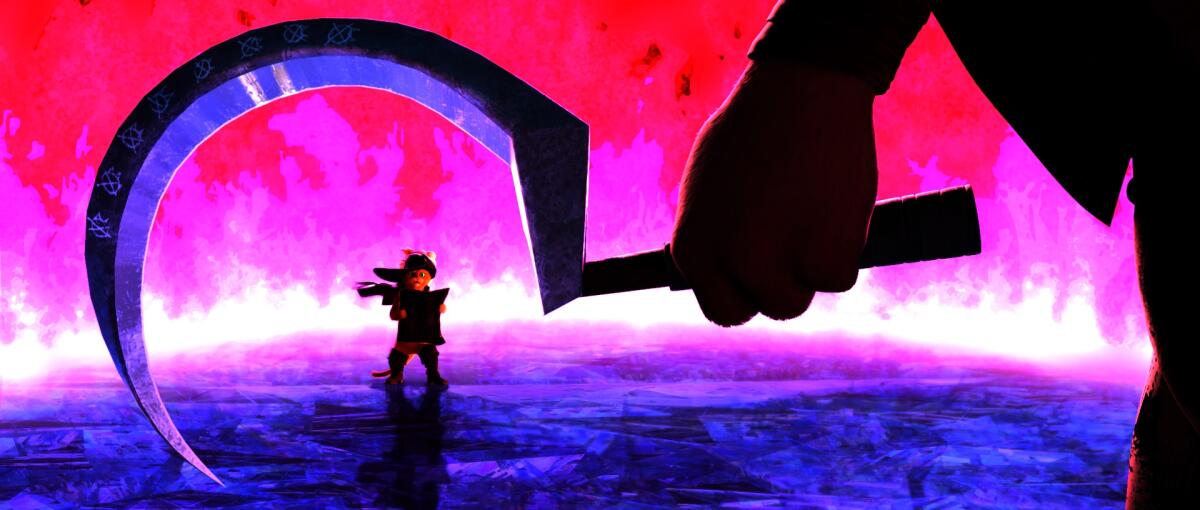
In the fight, Puss faces, for the first time, an opponent he may not be able to defeat.
“So for us, trying to find this moment where Puss is going to be touched by blade for the first time — how to dramatize that? So you have the initial inspiration, and as you get in there, you find what it needs to be in the scene. It’s not a one-for-one” direct transposition of a Leone image, but an image inspired by a shot from his “A Fistful of Dollars,” in which Eastwood’s face is divided by a sickle-like shadow.
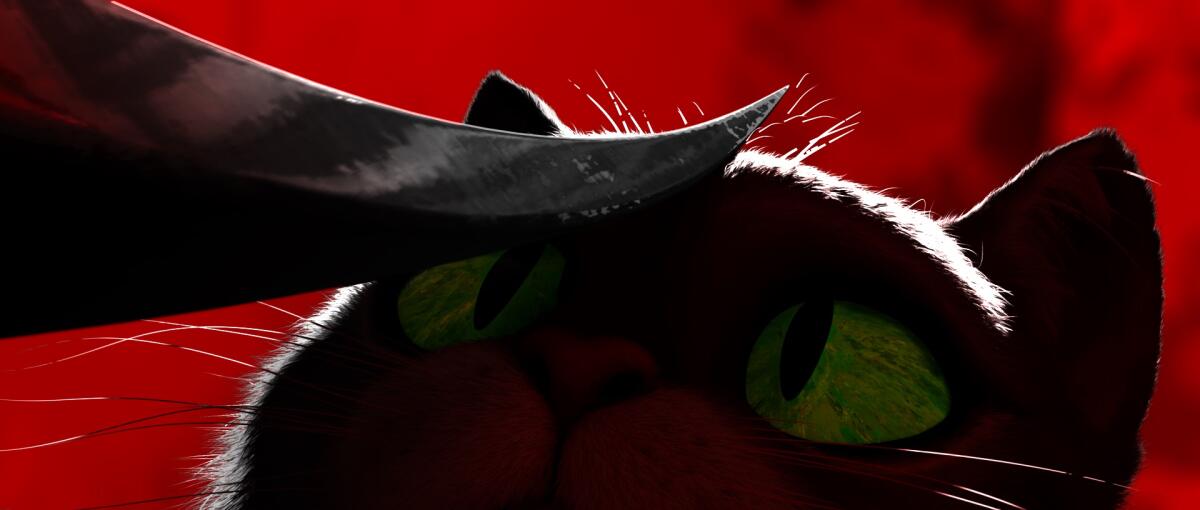
That visual foreshadowing in “Last Wish” isn’t limited to such direct comparison shots, though.
“When the Wolf reveals he’s not a bounty hunter but is, in fact, Death, we see that he has been there for every single one of Puss’ past lives. So in the beginning of the movie, when Puss is fighting the giant, the Wolf is seen in the crowd.
“Even in the doctor’s office, in the cards that show up when we’re showing each of Puss’ deaths, there’s a fancy little border: It’s an icon of the Wolf with sickles. It’s more on an unconscious level at that point, but you have a story about characters” being oblivious so “we plant it in front of the characters’ faces, and also the audience’s.”
The foreshadowing isn’t just visual, either:
“He’s oblivious to how many lives he’s lost. When he’s fighting the giant in the beginning, the bell swings and tolls eight times. In the bar, there are eight shot glasses he’s drunk, and he’s on his ninth when he’s interrupted by the wolf. And there’s a clock in the background that chimes eight times. Everything we’re telling you isn’t just made up when it’s revealed; it’s been there the whole time.”
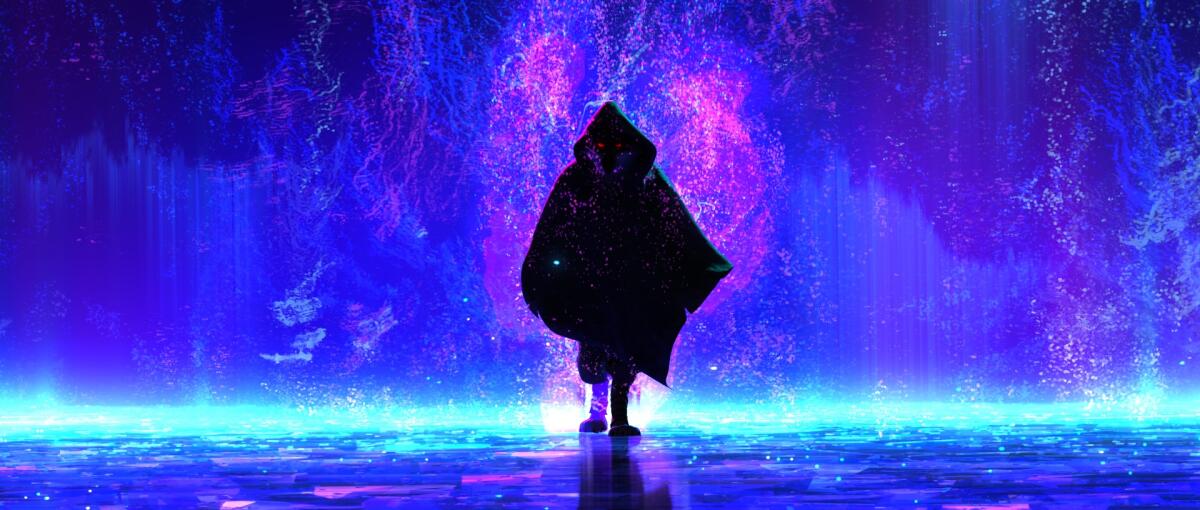
The Wolf character too is influenced by classic film imagery.
“The Wolf is heavily based on the kind of character Akira Kurosawa portrayed that was dipped in humanity, honor and class. The Wolf isn’t actually the villain. Puss has the flawed point of view about not appreciating life that has caused Death to come after him. So we wanted that whole third-act ending to feel like it was built on the code of the samurai. When we hear that ominous whistle and the Wolf steps through the magic, we were inspired by ‘Yojimbo,’ when Toshiro Mifune steps onto the street and the duel’s about to start. Even the ending, when Puss and the Wolf are face-to-face, that was inspired by ‘Sanjuro,’ one of the last moments that ends in a standoff.
“When the characters all arrive [for the final confrontation], it’s very much the ending of ‘The Good, the Bad and the Ugly,’ with a standoff. You had three characters and these big wides; we have five characters, with Puss and Kitty in the middle. Then we do the traditional Leone close-up of the eyes, the hands, even the music becomes very spaghetti-western there; we know the fun’s about to start.”
More to Read
From the Oscars to the Emmys.
Get the Envelope newsletter for exclusive awards season coverage, behind-the-scenes stories from the Envelope podcast and columnist Glenn Whipp’s must-read analysis.
You may occasionally receive promotional content from the Los Angeles Times.

